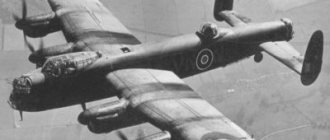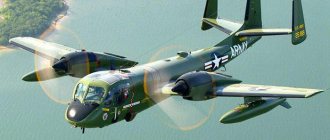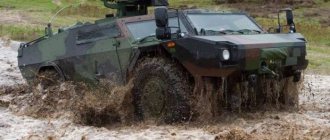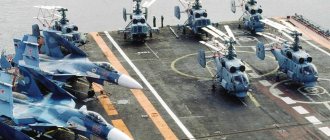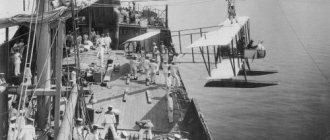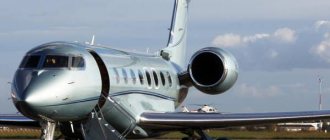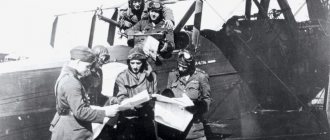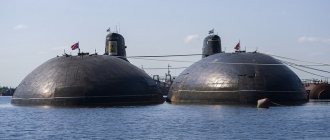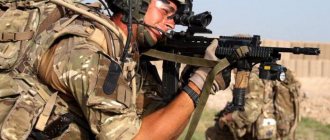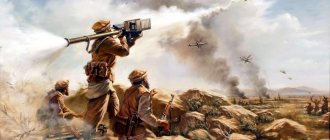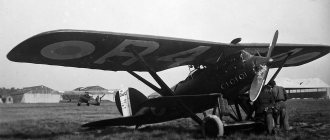The most beautiful pilot club in the world
After the First World War, Great Britain remained a country with pronounced class stratification. This social structure was reflected in all areas of the state - including the Royal Air Force.
On the same topic
An ancient family and the Royal BBC: how a Russian prince saved England from stratospheric bombers
In 1918, the Royal Air Force was the world's largest air force, with 263 squadrons of aircraft and 293,000 officers and men. After the end of the war, the size of the Air Force was reduced by 15 times. Only the best of the best could serve in aviation, and in Great Britain this concept had a special local flavor.
At the same time that in the Soviet Union they were calling with all their might “Komsomol members to get on the plane,” in Great Britain the road to the sky was open only to a select few. The Royal Air Force pilots called themselves “The Greatest Pilots Club in the World,” and this statement corresponded to the true state of affairs - it was almost impossible to get into their ranks just like that, off the street.
Sir Douglas Bader driving his sports car. Bader belonged to the elite
Advantageous match
If you study the biographies of the famous English pilots of the Second World War, who were in the ranks of the Air Force before it began, you can note the fact that almost all of them were graduates of the most prestigious private schools in Great Britain. Letters of recommendation provided to pilot candidates were as important a factor for enlistment as eye or physical fitness.
St. Edward's School, Oxford, one of the "manpower forges" of the pre-war RAF
The small number of professional air forces was very convenient in peacetime, but in case of war it was necessary to quickly increase it and have the necessary reserve of pilots to make up for losses. For some time this issue was covered by the reserve of pilots who participated in the First World War, but over time they began to retire from the reserve due to age.
Auxiliary Air Force Badge
The problem was to be solved by the Auxiliary Air Force (AAF), which appeared in 1924. In essence, these were flying clubs opened at Royal Air Force airfields; the military provided them with aviation materiel and the necessary equipment. AAF pilots enlisted in the Air Force Reserve for a period of five years, during which they were required to fly several hours each quarter and attend an annual fifteen-day training camp.
To join the Auxiliary Air Force you were required to pay for a pilot's licence, which cost around £96. This was a very decent amount, which provided at least a property qualification for candidates.
English Auxiliary Air Force pilot's score sheet for 1935
It is not for nothing that the so-called “squadron of millionaires” was formed in the ranks of the AAF. It appeared on October 14, 1924, when several young aristocrats, amateur pilots, at a meeting at the London White Club decided to unite into an auxiliary squadron of the Air Force. The first squadron of the 601st Squadron was selected by its future commander, Lord Edward Grosvenor. According to legend, among other tests, candidates took part in a special drinking party to check whether they would then behave “inappropriately, discrediting the reputation of a gentleman.”
Almost all the squadron pilots owned private planes, and the parking lot in front of the flying club resembled a fashionable car showroom.
The pilots wore red silk uniforms, non-standard blue ties and “had little idea of military discipline.”
In fairness, it is worth noting that the pilots from this squadron did not have any discount on their origin during hostilities. During the Battle of Britain the squadron defended the skies over London. Of the original 21 pilots, 11 were killed by September 1940. The squadron was then replenished with new personnel, and soon it was little different from the rest of the RAF units.
Surviving pilots of the "Millionaire Squadron", September 1940
Until 1936, “flying wings” - the insignia of the Royal Air Force flight personnel - were a kind of sign of quality, belonging to the British high society. It was not for nothing that combat pilots were considered a very successful and profitable match for any young noble lady.
However, in 1936 the situation changed dramatically.
RAF Reconnaissance Aircraft (2019)
Captain 2nd Rank S. Denisov
The forces and means of reconnaissance, surveillance, target acquisition and reconnaissance of the British Air Force are one of the most important types of combat support for the national armed forces.
In accordance with doctrinal provisions, the main tasks of reconnaissance aviation are: conducting aerial reconnaissance and electronic warfare, using strike weapons, providing air support to ground forces and naval forces, and searching for crews of aircraft and ships in distress.
In the interests of supporting the activities of air reconnaissance forces and assets, the British air bases (ABB) Waddington, Marham, Digby and Wheaton are used. In addition, outside the national territory, permanent detachments have been deployed to AB Akrotiri (Cyprus), Krich (USA) and El Udeid (Qatar).
The reconnaissance aircraft of the Royal Air Force are armed with the E-3D Sentry long-range radar detection and control aircraft, the Sentinel R.1 ground reconnaissance aircraft, the RC-135V/W Rivet Joint radio and electronic reconnaissance aircraft, reconnaissance and Shadow R.1 target designation, MQ-9 Reaper unmanned aerial vehicles (UAVs). In addition, reconnaissance missions can be carried out by Tornado GR.4 tactical fighters.
All aviation equipment is organizationally part of the squadrons of the 1st Royal Air Force Combat Aviation Group, stationed at Waddington Air Base in Lincolnshire: 8 airborne AWACS (six E-3D Sentry), 5 airborne aircraft (five Sentinel R.1), 14 airborne units (six Shadow R.1), 51 airborne electronic warfare units (three RC-135W Rivet Joints), 13 airborne UAVs (five MQ-9 Reaper UAVs), 39 airborne UAVs (five MQ-9 UAVs) Reaper").
A key element of the RAF's air reconnaissance system is the E-3D Sentry AWACS aircraft. In December 1986, Great Britain placed an order with the United States for the purchase of six such aircraft manufactured by the Boeing Corporation. In October 1987, the option to purchase a seventh vehicle was exercised. The E-3D aircraft, built on the basis of a Boeing 707-320 cargo airliner with a modern AN/APY-2 radar, is designed to solve control, communications and electronic reconnaissance tasks.
The first Sentry for the British Air Force took off in September 1989. The aircraft made a flight with a full set of avionics in January 1990. The British modification of the E-3D is distinguished by Loral RTR containers installed on the wingtips. The main radar antenna radome with a diameter of 9 m is mounted on two pylons in the rear fuselage.
The E-3D is capable of staying in the air for up to 11 hours. This time can be increased when refueling in the air. It is noteworthy that this aircraft is the only one in the British Air Force in which two refueling options are technologically implemented: the American one (using a telescopic rod) and the European one (using the “hose-cone” scheme). Currently, one of the seven E-3Ds that have reached the end of their flight life is used at Waddington Air Force Base for training purposes.
The acquisition of the Sentry by the British Air Force allowed the national fleet of Tornado combat aircraft to be used as an element of a multi-level AWACS system.
In 1999, the UK Ministry of Defense announced a competition to identify a prototype aircraft for the Astor air reconnaissance and strike control system.
The main contenders for the contract were the European (Global Express platform) and American aircraft manufacturers (Gulf Stream 5 platform). Based on the results of the competition, the Global Express aircraft was selected. This aircraft has a 30% larger area for placing equipment, and the power of power supplies is 50% higher than that of Gulf Stream-5. This allows you to place a significant range of radio equipment on board.
In accordance with the terms of the contract, five modified Global Express aircraft, named Sentinel R.1, as well as eight Astor ground stations were delivered to the Royal Air Force from 2007 to 2009.
The standard aircraft crew consists of five people (two pilots, three operators). In addition, it provides space for a replacement crew. Flight duration without refueling is more than 9 hours.
The main DMRS radar manufactured by Raytheon is located in the lower part of the fuselage. In addition to detecting air targets, it can be used to monitor sea waters and/or control a combat zone. The end of service life of the Sentinel R.1 fleet is expected in 2022.
In June 2011, Nimrod R.1 reconnaissance aircraft were withdrawn from the 51st EW (AirB Waddington) of the 1st Air Group of the Royal Air Force Air Command.
In order to replace this type of aircraft, London decided to purchase three American-made RC-135V Rivet Joint strategic reconnaissance aircraft. The corresponding agreement was concluded between the United States and Great Britain on March 19, 2010.
RC-135V for Great Britain were converted by the American corporation L-3 Communications at a defense plant in Greenville (Texas) on the basis of KC-135R Stratotanker strategic refueling aircraft, withdrawn from combat service by the US Air Force.
Along with American equipment, the aircraft also received special British-made equipment, in particular the Kinetic Tigershark-2 radio reconnaissance complex.
In addition, the Rivet Joint is equipped with modern satellite communications that allow the crew to receive data from other aircraft, as well as from ground stations for receiving, processing and transmitting intelligence information in real time.
The conversion and supply of the RC-135V, as well as ground support and test equipment, is estimated at US$1.1 billion. The UK leadership plans to spend another 800 million on modernization and repair of machines.
Rivet Joints were supplied to the Royal Air Force between 2013 and 2022. More than 60 improvements were made to the design of the second and third aircraft in the field of combat systems and engines, which made it possible to save fuel and increase the maximum flight range to 11 thousand km or more.
In 2006, the UK MoD acquired four King Air 350ER general purpose turboprop aircraft, which were converted by the British division of the Raytheon Corporation for reconnaissance and were named Shadow R.1. The initial purpose of the program was to provide intelligence information to British military units within ISAF and the NATO Resolute Support training mission in Afghanistan.
On board the Shadow there are: Aves optoelectronic reconnaissance stations capable of continuously monitoring large areas of the territory in the visible and infrared wavelengths, a radar with a synthetic aperture mode, VHF/HF/MF communications equipment and a satellite communications system.
The first batch of four aircraft was put into service in 2007-2010, the fifth was put into service in 2011, and the sixth in 2013.
From 2007 to 2014, the UK acquired ten MQ-9 Reaper unmanned aerial vehicles (UAVs) from the US, designed for aerial reconnaissance, surveillance, target designation and destruction of ground targets. The total value of the contract was US$1 billion. In addition to the UAVs, eight ground control stations and four automatic take-off and landing systems were also purchased.
The MQ-9 Reaper is based on the American-made RQ/MQ-1 Predator multi-purpose UAV. The main design difference of this sample is the V-shaped tail. The Reaper equipment consists of an MTS-B optical-electronic sighting system and an AN/APY-8 synthetic aperture radar.
It should be noted that these UAVs are actively used to support the activities of the British armed forces in the Middle East.
In the period from 1979 to 1998, according to the project of the German, British "British Aerospace" and the Italian "Alenia Aeronotica", a two-seat multi-role combat aircraft with a variable sweep wing "Tornado" was produced. A total of 992 vehicles were produced in attack and reconnaissance versions.
The aircraft were supplied to the British Air Force from 1980, where they received the designation "Tornado" GR.1.
The program for upgrading these vehicles to the GR.4 version, commissioned by the Royal Air Force, was carried out from 1996 to 2003. In addition, the GR.4A modification was created on the platform of the Tornado GR.4 fighter, which performs tactical all-weather reconnaissance tasks in the national air force.
Currently, the Royal Air Force operates more than 20 Tornado GR.4 and GR.4A aircraft.
Organizationally, these vehicles are part of the 1st air group of combat aviation and perform reconnaissance missions depending on the availability of on-board equipment. As a rule, the aircraft is equipped with a whole set of electronic reconnaissance and target detection equipment (Raptor optical-electronic station, GPINS navigation system, multifunctional radar, laser target designation and search system for marked targets LRMTS).
"Tornado" GR.4 are planned to be withdrawn from service in the country's Air Force starting in 2022 under the program of their replacement with tactical fighters F-35B "Lightning-2" produced by the American corporation Lockheed Martin, which are entering service with the British Air Force from 2022.
The prospects for the development of reconnaissance aircraft of the Royal Air Force are defined in the national documents “Strategic Review of Defense and Security” (2015) and “Royal Air Force Strategy” (2017) and include the following main provisions:
— acquisition of up to 26 new MQ-9B Protector unmanned aerial vehicles and up to six ground control and maintenance stations to replace the MQ-9 Reaper; it is expected that new UAVs will have an increased flight range (up to 5 thousand km) and will be able to carry more payload on board; — modernization of the fleet of E-3D Sentry long-range radar detection and control aircraft in order to extend their service life until 2035; — purchase of two additional electronic reconnaissance and target designation aircraft “Shadow” R.1.
Implementation of the agreement between the UK and France on the creation by 2025 of a consortium of British and French and Dassault, with the participation of Thales France, Leonardo, Rolls-Royce and Safran, technology demonstrators of new generation UAVs using stealth technologies in within the framework of the bilateral FCAS program.
The cost of joint work at the modernization stage is 1.87 billion US dollars. Based on the results of subsequent tests, it is possible that promising UAVs will be put into service after 2030.
Thus, the UK Military Department is currently actively implementing the “Program for the Integration of Air Reconnaissance Forces and Facilities”, aimed at solving the following tasks: - completing the integration of air reconnaissance forces and means into a single multi-level reconnaissance complex of the national air force with the involvement of the corresponding segment of army aviation; — optimization and increase in the efficiency of procurement activities, as well as the organization of maintenance and repair of reconnaissance aircraft; — improving approaches to organizing the training and retraining of Air Force specialists for their involvement in operations involving the latest aviation components of the reconnaissance and surveillance system of the British Armed Forces.
In general, the current state of British reconnaissance aviation allows it to solve problems in supporting the national armed forces, and the implementation of programs for the purchase of new types of military and special equipment will significantly increase the capabilities of this type of armed forces.
Foreign military review. - 2022. - No. 6. — P. 56-61
